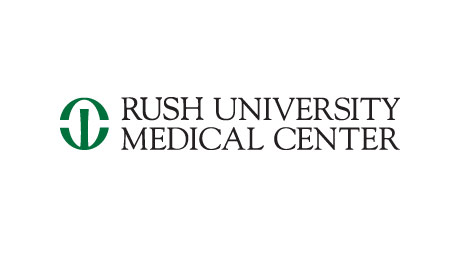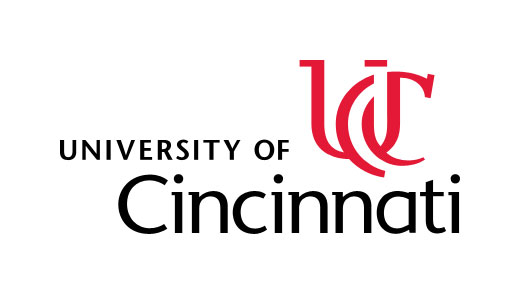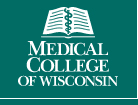Stenting vs. Aggressive Medical Management for Preventing Recurrent Stroke in Intracranial Stenosis
| Status: | Completed |
|---|---|
| Conditions: | Peripheral Vascular Disease, Neurology |
| Therapuetic Areas: | Cardiology / Vascular Diseases, Neurology |
| Healthy: | No |
| Age Range: | 30 - 80 |
| Updated: | 6/1/2018 |
| Start Date: | October 2008 |
| End Date: | April 2013 |
PRIMARY HYPOTHESIS:
Compared with intensive medical therapy alone, intracranial angioplasty and stenting combined
with intensive medical therapy will decrease the risk of the primary endpoint by 35% over a
mean follow-up of two years in high-risk patients patients with 70% - 99% intracranial
stenosis who had a transient ischemic attack (TIA) or stroke within 30 days prior to
enrollment) with symptomatic stenosis of a major intracranial artery.
SUMMARY:
The best treatment for prevention of another stroke or TIA in patients with narrowing of one
of the arteries in the brain is uncertain. A common treatment is the use of anti-clotting
medications to prevent blood clots from forming in the narrowed vessel. There are a variety
of medicines used for this purpose. These medications are usually taken for the rest of a
patient's life.
However, a treatment that has been used successfully together with anti-clotting medications
in patients with narrowing of the blood vessels of the heart is now being studied in the
blood vessels of the brain. This treatment is called stenting.
Recent research has also indicated a benefit in prevention of recurring stroke by Intensive
Medical Therapy, which is defined as treating risk factors for stroke like high blood
pressure, elevated LDL (low density lipids - the "bad" form of cholesterol) and diabetes. The
purpose of this study is to compare the safety and effectiveness of either Intensive Medical
Therapy PLUS Stenting or Intensive Medical Therapy ONLY in preventing stroke, heart attacks
or death.
The study will enroll patients over a 5 year period. Each participant will be involved in the
study for a minimum of 1 year and a maximum of 3 years.
Fifty different medical centers in the United States are part of this study. Both the
Clinical Coordinating Center and the Statistical Coordinating Center for the entire study
will be located at Emory University.
Compared with intensive medical therapy alone, intracranial angioplasty and stenting combined
with intensive medical therapy will decrease the risk of the primary endpoint by 35% over a
mean follow-up of two years in high-risk patients patients with 70% - 99% intracranial
stenosis who had a transient ischemic attack (TIA) or stroke within 30 days prior to
enrollment) with symptomatic stenosis of a major intracranial artery.
SUMMARY:
The best treatment for prevention of another stroke or TIA in patients with narrowing of one
of the arteries in the brain is uncertain. A common treatment is the use of anti-clotting
medications to prevent blood clots from forming in the narrowed vessel. There are a variety
of medicines used for this purpose. These medications are usually taken for the rest of a
patient's life.
However, a treatment that has been used successfully together with anti-clotting medications
in patients with narrowing of the blood vessels of the heart is now being studied in the
blood vessels of the brain. This treatment is called stenting.
Recent research has also indicated a benefit in prevention of recurring stroke by Intensive
Medical Therapy, which is defined as treating risk factors for stroke like high blood
pressure, elevated LDL (low density lipids - the "bad" form of cholesterol) and diabetes. The
purpose of this study is to compare the safety and effectiveness of either Intensive Medical
Therapy PLUS Stenting or Intensive Medical Therapy ONLY in preventing stroke, heart attacks
or death.
The study will enroll patients over a 5 year period. Each participant will be involved in the
study for a minimum of 1 year and a maximum of 3 years.
Fifty different medical centers in the United States are part of this study. Both the
Clinical Coordinating Center and the Statistical Coordinating Center for the entire study
will be located at Emory University.
This will be an investigator initiated and designed Phase III multicenter trial in which
patients with TIA or non-disabling stroke within 30 days prior to enrollment that is caused
by 70% - 99% stenosis of a major intracranial artery (MCA, carotid, vertebral, or basilar)
will be randomized (1:1) at approximately 50 sites to:
intensive medical therapy alone (aspirin 325 mg / day for entire follow-up, clopidogrel 75mg
per day for 90 days after enrollment unless cardiologist recommends continuing clopidogrel
beyond 90 days for a cardiac indication, and aggressive risk factor management primarily
targeting blood pressure < 140 / 90 mm Hg (< 130 / 80 if diabetic) and LDL < 70 mg / dl)
OR
intracranial angioplasty and stenting using the Gateway balloon and Wingspan self-expanding
nitinol stent (or any future FDA approved iterations of the balloon, stent, or the delivery
systems) plus intensive medical therapy (aspirin 325 mg / day for entire follow-up,
clopidogrel 75mg per day for 90 days after enrollment unless cardiologist recommends
continuing clopidogrel beyond 90 days for a cardiac indication, and aggressive risk factor
management primarily targeting blood pressure < 140 / 90 mm Hg (< 130 / 80 if diabetic) and
LDL < 70 mg / dl).
Risk factor management will be performed by the study neurologist at each site who will be
assisted by an innovative, evidence-based, educational, lifestyle modification program
(INTERxVENT) that will be administered at regularly scheduled times to all patients
throughout the study.
All patients enrolled in the trial will be followed until the first of the following: 90 days
after a primary endpoint, death, or the close-out visit in the trial, which will occur within
a window from 60 days before March 31, 2012 to 30 days after March 31, 2013. Patients who do
not die or have a primary endpoint during follow-up will be followed for 2-4.5 years.
patients with TIA or non-disabling stroke within 30 days prior to enrollment that is caused
by 70% - 99% stenosis of a major intracranial artery (MCA, carotid, vertebral, or basilar)
will be randomized (1:1) at approximately 50 sites to:
intensive medical therapy alone (aspirin 325 mg / day for entire follow-up, clopidogrel 75mg
per day for 90 days after enrollment unless cardiologist recommends continuing clopidogrel
beyond 90 days for a cardiac indication, and aggressive risk factor management primarily
targeting blood pressure < 140 / 90 mm Hg (< 130 / 80 if diabetic) and LDL < 70 mg / dl)
OR
intracranial angioplasty and stenting using the Gateway balloon and Wingspan self-expanding
nitinol stent (or any future FDA approved iterations of the balloon, stent, or the delivery
systems) plus intensive medical therapy (aspirin 325 mg / day for entire follow-up,
clopidogrel 75mg per day for 90 days after enrollment unless cardiologist recommends
continuing clopidogrel beyond 90 days for a cardiac indication, and aggressive risk factor
management primarily targeting blood pressure < 140 / 90 mm Hg (< 130 / 80 if diabetic) and
LDL < 70 mg / dl).
Risk factor management will be performed by the study neurologist at each site who will be
assisted by an innovative, evidence-based, educational, lifestyle modification program
(INTERxVENT) that will be administered at regularly scheduled times to all patients
throughout the study.
All patients enrolled in the trial will be followed until the first of the following: 90 days
after a primary endpoint, death, or the close-out visit in the trial, which will occur within
a window from 60 days before March 31, 2012 to 30 days after March 31, 2013. Patients who do
not die or have a primary endpoint during follow-up will be followed for 2-4.5 years.
INCLUSION CRITERIA
1. Transient ischemic attack (TIA) or non-severe stroke within 30 days of enrollment
attributed to 70-99% stenosis of a major intracranial artery (carotid artery, MCA stem
(M1), vertebral artery, or basilar artery)
• may be diagnosed byTranscranial Doppler (TCD), Magnetic Resonance Angiogram (MRA),
or computed tomography angiography (CTA) to qualify for angiogram performed as part of
the study protocol but must be confirmed by catheter angiography for enrollment in the
trial
2. Modified Rankin score of ≤ 3
3. Target area of stenosis in an intracranial artery that has a normal diameter of 2.00
mm to 4.50 mm
4. Target area of stenosis is less than or equal to 14 mm in length
5. Age ≥ 30 years and ≤ 80 years.
• Patients 30-49 years are required to meet at least one additional criteria (i-vi)
provided in the table below to qualify for the study. This additional requirement is
to increase the likelihood that the symptomatic intracranial stenosis in patients
30-49 years is atherosclerotic.
i. insulin dependent diabetes for at least 15 years ii. at least 2 of the following
atherosclerotic risk factors: hypertension (BP > 140/90 or on antihypertensive
therapy); dyslipidemia (LDL > 130 mg /dl or HDL < 40 mg/dl or fasting triglycerides >
150 mg/dl or on lipid lowering therapy); smoking; non-insulin dependent diabetes or
insulin dependent diabetes of less than 15 years duration; family history of any of
the following: myocardial infarction, coronary artery bypass, coronary angioplasty or
stenting, stroke, carotid endarterectomy or stenting, peripheral vascular surgery in
parent or sibling who was < 55 years of age for men or < 65 for women at the time of
the event ii. history of any of the following: myocardial infarction, coronary artery
bypass, coronary angioplasty or stenting, carotid endarterectomy or stenting, or
peripheral vascular surgery for atherosclerotic disease iv. any stenosis of an
extracranial carotid or vertebral artery, another intracranial artery, subclavian
artery, coronary artery, iliac or femoral artery, other lower or upper extremity
artery, mesenteric artery, or renal artery that was documented by non-invasive
vascular imaging or catheter angiography and is considered atherosclerotic v. aortic
arch atheroma documented by non-invasive vascular imaging or catheter angiography vi.
any aortic aneurysm documented by non-invasive vascular imaging or catheter
angiography that is considered atherosclerotic
6. Negative pregnancy test in a female who has had any menses in the last 18 months
7. Patient is willing and able to return for all follow-up visits required by the
protocol
8. Patient is available by phone
9. Patient understands the purpose and requirements of the study, can make him/herself
understood, and has provided informed consent
EXCLUSION CRITERIA
1. Tandem extracranial or intracranial stenosis (70%-99%) or occlusion that is proximal
or distal to the target intracranial lesion (NOTE: an exception is allowed if the
occlusion involves a single vertebral artery proximal to a symptomatic basilar artery
stenosis and the contralateral vertebral artery is supplying the basilar artery)
2. Bilateral intracranial vertebral artery stenosis of 70%-99% and uncertainty about
which artery is symptomatic (e.g. if patient has pontine, midbrain, or temporal -
occipital symptoms)
3. Stenting, angioplasty, or endarterectomy of an extracranial (carotid or vertebral
artery) or intracranial artery within 30 days prior to expected enrollment date
4. Previous treatment of target lesion with a stent, angioplasty, or other mechanical
device, or plan to perform staged angioplasty followed by stenting of target lesion
5. Plan to perform concomitant angioplasty or stenting of an extracranial vessel tandem
to an intracranial stenosis
6. Presence of intraluminal thrombus proximal to or at the target lesion
7. Any aneurysm proximal to or distal to stenotic intracranial artery
8. Intracranial tumor (except meningioma) or any intracranial vascular malformation
9. CT or angiographic evidence of severe calcification at target lesion
10. Thrombolytic therapy within 24 hours prior to enrollment
11. Progressive neurological signs within 24 hours prior to enrollment
12. Brain infarct within previous 30 days of enrollment that is of sufficient size (> 5
cms) to be at risk of hemorrhagic conversion during or after stenting
13. Any hemorrhagic infarct within 14 days prior to enrollment
14. Any hemorrhagic infarct within 15 - 30 days that is associated with mass effect
15. Any history of a primary intracerebral (parenchymal) hemorrhage (ICH)
16. Any other intracranial hemorrhage (subarachnoid, subdural, epidural) within 30 days
17. Any untreated chronic subdural hematoma of greater than 5 mm in thickness
18. Intracranial arterial stenosis due to arterial dissection, Moya Moya disease; any
known vasculitic disease; herpes zoster, varicella zoster or other viral vasculopathy;
neurosyphilis; any other intracranial infection; any intracranial stenosis associated
with Cerebrospinal fluid (CSF) pleocytosis; radiation induced vasculopathy;
fibromuscular dysplasia; sickle cell disease; neurofibromatosis; benign angiopathy of
central nervous system; post-partum angiopathy; suspected vasospastic process,
suspected recanalized embolus
19. Presence of any of the following unequivocal cardiac sources of embolism: chronic or
paroxysmal atrial fibrillation, mitral stenosis, mechanical valve, endocarditis,
intracardiac clot or vegetation, myocardial infarction within three months, dilated
cardiomyopathy, left atrial spontaneous echo contrast, ejection fraction less than 30%
20. Known allergy or contraindication to aspirin, clopidogrel, heparin, nitinol, local or
general anesthesia
21. History of life-threatening allergy to contrast dye. If not life threatening and can
be effectively pretreated, patient can be enrolled at physician's discretion
22. Active peptic ulcer disease, major systemic hemorrhage within 30 days, active bleeding
diathesis, platelets < 100,000, hematocrit < 30, International normalized ratio (INR)
> 1.5, clotting factor abnormality that increases the risk of bleeding, current
alcohol or substance abuse, uncontrolled severe hypertension (systolic pressure > 180
mm Hg or diastolic pressure > 115 mm Hg), severe liver impairment Aspartate
Transaminase (AST) or Alanine transaminase (ALT) > 3 x normal, cirrhosis, creatinine >
3.0 (unless on dialysis)
23. Major surgery (including open femoral, aortic, or carotid surgery) within previous 30
days or planned in the next 90 days after enrollment
24. Indication for warfarin or heparin beyond enrollment (NOTE: exceptions allowed for use
of systemic heparin during stenting procedure or subcutaneous heparin for deep vein
thrombosis (DVT) prophylaxis while hospitalized)
25. Severe neurological deficit that renders the patient incapable of living independently
26. Dementia or psychiatric problem that prevents the patient from following an outpatient
program reliably
27. Co-morbid conditions that may limit survival to less than 3 years
28. Pregnancy or of childbearing potential and unwilling to use contraception for the
duration of this study
29. Enrollment in another study that would conflict with the current study
We found this trial at
50
sites
Baylor University Medical Center Baylor University Medical Center in Dallas, TX is ranked nationally in...
Click here to add this to my saved trials
Emory University Emory University, recognized internationally for its outstanding liberal artscolleges, graduate and professional schools,...
Click here to add this to my saved trials
Click here to add this to my saved trials
Click here to add this to my saved trials
Cleveland Clinic Cleveland Clinic is committed to principles as presented in the United Nations Global...
Click here to add this to my saved trials
Inova Fairfax Hospital Inova Fairfax Hospital, Inova's flagship hospital, is an 833-bed, nationally recognized regional...
Click here to add this to my saved trials
Click here to add this to my saved trials
University of Miami A private research university with more than 15,000 students from around the...
Click here to add this to my saved trials
University of Pittsburgh The University of Pittsburgh is a state-related research university, founded as the...
Click here to add this to my saved trials
Johns Hopkins The Johns Hopkins University opened in 1876, with the inauguration of its first...
Click here to add this to my saved trials
Click here to add this to my saved trials
Click here to add this to my saved trials
171 Ashley Avenue
Charleston, South Carolina 29425
Charleston, South Carolina 29425
843-792-1414

Medical University of South Carolina The Medical University of South Carolina (MUSC) has grown from...
Click here to add this to my saved trials
Click here to add this to my saved trials
Rush University Medical Center Rush University Medical Center encompasses a 664-bed hospital serving adults and...
Click here to add this to my saved trials
University of Cincinnati The University of Cincinnati offers students a balance of educational excellence and...
Click here to add this to my saved trials
Click here to add this to my saved trials
Click here to add this to my saved trials
Click here to add this to my saved trials
Duke Univ Med Ctr As a world-class academic and health care system, Duke Medicine strives...
Click here to add this to my saved trials
Click here to add this to my saved trials
Click here to add this to my saved trials
Click here to add this to my saved trials
Click here to add this to my saved trials
Click here to add this to my saved trials
Click here to add this to my saved trials
UCLA UCLA's primary purpose as a public research university is the creation, dissemination, preservation and...
Click here to add this to my saved trials
Medical College of Wisconsin The Medical College (MCW) of Wisconsin is a major national research...
Click here to add this to my saved trials
West Virginia University West Virginia University, founded in 1867, has a long and rich history...
Click here to add this to my saved trials
Click here to add this to my saved trials
Click here to add this to my saved trials
Columbia University Medical Center Situated on a 20-acre campus in Northern Manhattan and accounting for...
Click here to add this to my saved trials
Univ of Pennsylvania Penn has a long and proud tradition of intellectual rigor and pursuit...
Click here to add this to my saved trials
Thomas Jefferson University We are dedicated to the health sciences and committed to educating professionals,...
Click here to add this to my saved trials
Click here to add this to my saved trials
Click here to add this to my saved trials
Click here to add this to my saved trials
Click here to add this to my saved trials
Click here to add this to my saved trials
Stony Brook University Medical Center Stony Brook Medicine expresses our shared mission of research, clinical...
Click here to add this to my saved trials
Click here to add this to my saved trials
Click here to add this to my saved trials
Click here to add this to my saved trials
Click here to add this to my saved trials
Click here to add this to my saved trials


















